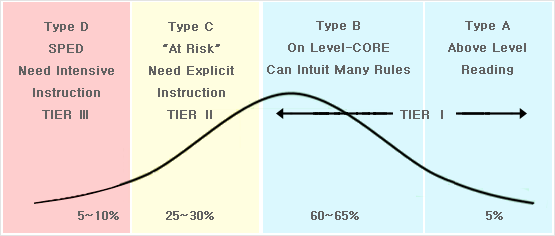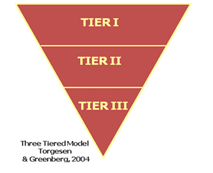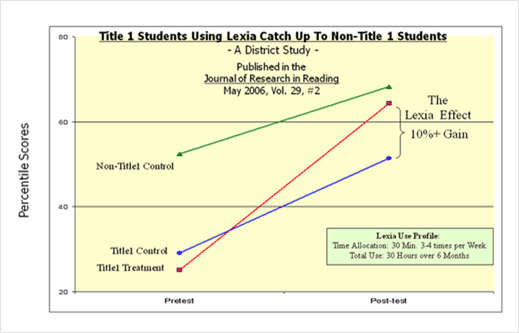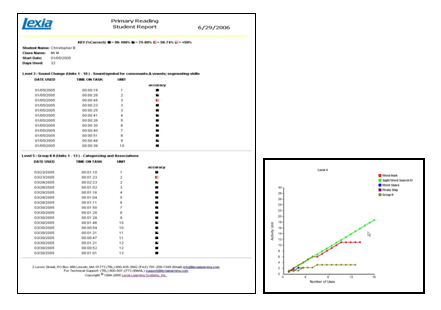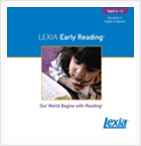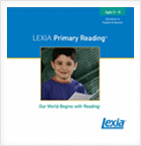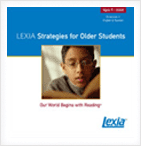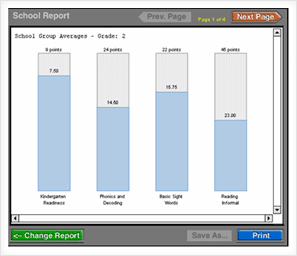
음소(Phonemes) 배우기
모든 언어는 음소라는 특정 단위의 소리로 이루어진다. 각 언어가 그만의 음소를 갖고 있지만, 세계 모든 언어의 음소들을 합치면 약 150가지입니다. 이 음소들을 조합하여 음절을 만듭니다. 예를 들어, 영어에서는 자음 “t”와 모음 “o”의 음소들이 합쳐져 tomato (토마토) 할 때의 음절 to- 를 만듭니다. 소아의 뇌는 음소의 모든 영역을 파악할 수 있지만, 반복되는 음소만이 주목을 받는데, 그 이유는 특정 소리 패턴에 반응하는 신경이 계속적으로 자극되고 훈련되기 때문입니다.
아기들은 태어날 때부터, 혹은 태어나기 전부터 엄마의 말이 아닌 운율, 즉 엄마의 목소리의 리듬과 억양과 높이에 처음 반응합니다. 생후 6개월 즈음 되면, 영아는 언어습득의 초기신호인 옹알이를 하기 시작합니다. 영아들이 음소를 소리 내는 것은 유전적으로 결정된 신경 프로그램 때문이지만, 언어에 노출되는 것은 환경적인 요소입니다. 이 두 요소가 상호 작용하여 언어 시스템을 형성하는 것이고, 장애가 없는 경우 타인과 명확한 대화를 나눌 수 있는 충분한 능력을 발달시킨다. 소아의 옹알이는 언어에 필요한 모든 음소로 이루어지며, 심지어는 아이가 들어보지 못한 음소도 포함되어 있습니다. 하지만 수개월 사이 아이의 뇌는 음소를 걸러내기 시작하고, 1살 즈음 되었을 때는 신경네트워크가 아이의 주위에서 접하는 구어의 소리에만 집중하게 됩니다 (Beatty, 2001).

단어와 형태소(Words and Morphemes) 배우기
뇌의 다음 순서는 소리의 처리과정에서 단어를 찾아내는 것입니다. 이는 사람들이 말하는 도중 단어를 띄엄띄엄 말하지 않기 때문에 매우 어려운 일입니다. 그럼에도 불구하고 뇌는, 예를 들면 green house (녹색 집)과 greenhouse (온실)의 차이를 인지해야 합니다. 연구결과에 의하면, 부모들은 아이들에게 말할 때 자연적으로 다른 화법을 사용하기 때문에 뇌의 이 과정을 도와줍니다고 합니다. 엄마는 모음을 강조하고 길게 늘어트리며 아이를 가르치는 방식으로 얘기합니다. 또한, 엄마는 아이에게 말할 때 목소리 톤이 높아지고, 억양과 리듬, 느낌 또한 달라진다. 연구자들에 의하면, 이는 엄마가 본능적으로 아이가 언어의 소리를 인지할 수 있도록 도와주려는 시도입니다. 연구자들은 러시아어, 일어 등의 타국어의 경우에도 이런 경향을 발견하였다 (Burnham, Kitamura, and Vollmer-Conna, 2002).
놀랍게도, 소아는 단어의 의미를 알기 전인 생후8개월부터 단어의 경계를 구별하기 시작합니다 (Van Patten and Bloom, 1999). 이 시점에서 아이들은 하루에 7개에서 10개의 새로운 단어를 습득하기 시작합니다. 생후10개월에서 12개월 즈음, 아이의 뇌는 낯선 소리는 무시하고 모국어의 음소를 구별하고 기억하기 시작합니다. 예를 들어, 한 연구결과에 따르면 일본에는 “L” 발음이 없음에도 불구하고 생후6개월 된 미국과 일본 아이들은 둘 다 “L”과 “R” 발음을 잘 구분합니다. 하지만, 생후10개월이 되면서 일본 아이들은 이 두 발음을 구분하는데 어려움을 겪는 반면, 미국 아이들은 전보다 더 쉽게 구분합니다. 이 시기와 이 후의 성장기 동안 모국어의 발음을 구분하는 능력은 향상되는 반면, 외국어의 발음을 구별하는 능력은 저하됩니다 (Cheour et al., 1998). 머지않아 ?s, -ed, -ing와 같은 형태소가 구사하는 어휘에 더해지며, 이와 동시에 아이가 단어에 의미를 부여할 수 있도록 아이의 기억력과 Wernicke의 영역이 완벽하게 기능하게 됩니다. 물론 단어습득은 하나의 기술에 불과하다. 단어를 조합해 하나의 의미 있는 표현을 만들어 내는 것은 더욱 어려운 기술입니다.
아이가 단어를 이해하는 속도는 머리 속에서 명확한 이미지를 떠올릴 수 있느냐와 밀접한 관계가 있습니다. Elephant (코끼리) 같은 단어는 이미지를 연상케 하고 그로 인해 justice (정의)와 같은 추상적인 단어보다 더 쉽게 이해됩니다. 그렇다면 과연 우리의 뇌는 이미지와 연관된 단어와 추상적인 단어를 처리하는 두 가지 다른 시스템을 유지하는 것일까?
이 의문과 관련하여 더 깊은 조사를 위해, Swaab과 그녀의 동료과학자들은 12명의 젊은 사람들을 대상으로 여러 EEG 실험을 통해 구체적인 단어와 추상적인 단어에 대한 뇌의 반응을 측정했습니다 (Swaab, Baynes, and Knight, 2002). EEG는 뇌에 자극이 주어졌을 시 ERP라고 불리는 뇌파활동의 변화를 측정합니다. 연구결과, 이미지와 연관성이 높은 단어는 뇌 앞부분, 즉 이미지 연상과 관련됐다고 생각되는 전두엽에 더 많은 ERP를 발생시킨 반면, 추상적인 단어는 뇌 중앙 윗부분 과 뒷부분, 즉 두정엽과 후두엽에 더 많은 ERP를 발생시켰다. 더 나아가, 어떠한 단어를 처리하는 중에도 각기 다른 영역들 간의 상호작용은 적은 것으로 나타났다. 이 실험의 결과는 뇌가 단어의 의미를 저장하는 두 개의 다른 창고를 사용합니다는, 즉 단어위주의 정보와 이미지위주의 정보를 따로 저장합니다는 주장에 힘을 실어주고 있습니다. 이 같은 발견은 언어교육방식과 깊이 연관되어 있습니다. 교사들은 추상적인 개념을 설명할 때 구체적인 그림을 사용해야 합니다는 점입니다. 예를 들어, 정의라는 의미를 가르칠 때에는 법복을 입은 판사, 정의의 저울, 법정 등을 그린 그림들이 큰 도움이 될 수 있습니다.

유아의 어휘의 공백
어린 나이의 유아들은 대부분의 단어들을 부모로부터 배우게 됩니다. 그 결과, 풍부한 어휘를 사용하는 어른들과 자주 대화를 나누는 아이들은 그러지 못한 아이들보다 더 뛰어난 표현력을 발휘하게 됩니다. 초기부터 증분적인 양상을 띄는 어휘발달의 차이는 그 정도가 점차 기하급수적으로 벌어지며 생후3살까지 심각한 어휘의 차이를 초래할 수 있습니다.
특별히 중요한 2단계 추적연구 (Hart and Risley, 2003)는 생후7개월부터 9개월 사이의 유아 42명을 상대로, 3살이 될 때까지 아이들의 어휘발달을 기록했습니다. 부모의 어휘는 사회적 경제적 위치와 연관성이 높기 때문에 1차 연구에서는 참여가족들을 배경에 따라 세 그룹으로 나누었다. 직업에 따라 13 가족은 상류층에, 23 가족은 중산층에, 6 가족은 하류층으로 나뉘었다. 아이들이 3살이 됐을 때, 연구진은 아이와 부모간의 케주얼한 대화내용 1,300시간여분을 기록하고 분석했습니다. 놀랍게도 연구결과는 사회경제적 위치에 따라 아이들이 사용하는 단어의 수가 큰 차이를 보였습니다. 하류층 가정의 아이들은 평균 525단어, 중산층 가정의 아이들은 평균 749단어, 상류층 아이들은 평균 1,116 단어를 알고 있었습니다.. 더 나아가 하류층 가정의 아이들은 연구진행 중 다른 가정의 아이들보다 더 느린 속도로 단어를 배워가고 있었습니다.
2차 연구는 6년 뒤에 진행되었다. 연구진은 이 당시 초등학교 3학년이 된 아이 29명을 대상으로 언어구사능력을 시험할 수 있었습니다.. 실험결과에 의하면, 어릴 적의 단어습득속도가 9살에서 10살 사이의 아이들의 단어, 듣기, 말하기, 문장론, 의미에 걸친 시험결과의 가장 정확한 지표가 됩니다. 이 연구는 유아시기가 아이의 지적 능력 형성에 얼마나 중요한지 알려주는 동시에, 유아의 언어경험을 평준화하는 것이 얼마나 힘든지 보여줍니다.
초기언어문제는 몇 안 되는 주에서 제공하고 있는 “태어나서 초등학교 입학까지”라는 정부지원 교육프로그램을 통해 성공적으로 교정될 수 있습니다. 이 프로그램에서, 인근 학교 관계자들은 소외계층 가정의 부모와 아이들과 정기적으로 만나며, 아이들이 학교에 입학하기 전까지 활용할 수 있는 저렴하고 나이에 적절한 교육자료를 제공합니다. 이 프로그램의 요지는 아이들이 초등학교에 입학하기 전에 어휘를 발달시키고 풍부한 언어활용에 노출되게 함에 있습니다. 미저리 주에서는 Parents as Teachers (PAT: 부모를 교사로)라는 프로그램을 1985년 시작하였고, 첫 실행 후 164,000여 결핍가정에 교육자료를 지원했습니다. 독자적 평가는 PAT 프로그램의 혜택을 받은 아이들이 3살이 되었을 때 비교대상의 아이들에 비해 뛰어난 언어발달, 문제해결, 사회적 발달을 보였습니다. 더 나아가, 이 프로그램은 특별교육, 유급, 보충수업의 규모를 반으로 줄여 해당지역의 학교들에게 큰 비용절감을 가져다 주었다 (MDESE, 2003).
Lexia Reading System의 개발은 1984년 프로그램 개발자인 Dr. Samuel Orton과 Anna Gillingham 박사와 오랫동안 같이 일했던 동료이며 그 당시 하버드 의대 부속 병원인 Massachusetts General Hospital에서 Reading Clinic의 Director로 있던 Edwin Cole과 컴퓨터 프로그램 전문가인 Dr. Littleton과 Harvard 대학 MBA 출신인 Bob Lemire에 의해서 Lexia Reading System 개발을 위하여 회사를 설립하였다.
이 프로그램을 개발하게 된 직접적인 계기는 Bob Lemire의 아들이 Dr. Edwin Cole에 의해서 읽기장애로 진단을 받고 그의 지시 하에 3년 동안 교육적 지도와 훈련 프로그램을 통하여 성공적으로 학교생활에 적응할 수 있게 되었다. Bob은 그의 아들의 성공적인 극복 과정을 지켜보면서 44개의 음소를 표현하기 위해서는 150가지의 음성-심볼 관계를 반복해서 배워야 해결됩니다는 것을 알게 되었다.
이러한 기술을 습득하지 못합니다면 아이들의 마음속에 단어에 대한 영원한 기억을 습득하기가 어렵다는 것을 알게 되었다. 말하고 듣는 것은 타고난 소인과 관계가 되지만 Reading은 후천적으로 습득 되어지는 것입니다. Reading을 정확하게 하기 위해서는 영어의 구어(Spoken Language)의 가장 발달적인 관점과 구성 요소간의 관계에 대한 정확한 식별이 필요합니다는 인식하에서 그 동안 이 분야에 권위자인 Dr. Edwin Cole의 계획하에 교사의 특별한 강의가 약간의 지시와 지원이 있으면 읽고 이해하기를 배울 수 있는 Computerized English Program을 개발하게 되었다.
이 프로그램은 Lexia Reading(ages 4-6세), Primary Reading(Ages 5-8세), strategies for older Students(Ages 9-Adult) 세가지로 구성되어 있고, Reading 수준을 평가할 수 있는 Reading/Comprehension Test Program과, 아이들이 읽고 이해를 빨리 하기 위한 신경학적 훈련인 시공간 훈련(Visual-Spartial)과 논리적인 훈련 프로그램이 부가적으로 제공 되어진다.
현재 미국 내에 1만개 이상의 학교에서 이 프로그램이 사용되어지고 있습니다. 미국에서는 읽기 발달이 느린 아이들에게 적용될 수 있도록 만든 프로그램이지만 지금은 읽기 발달을 위하여 보편적으로 광범위하게 사용되어지고 있습니다.

Lexia가 만들어진 배경 (Historical Background)
렉시아 프로그램의 설립자인 밥 르미르의 아들 보우가 하버드 의대 reading clinic의 전문가 코울 박사로부터 독서장애라는 진단을 받고, 링컨에 있는 캐롤 학교에서 한 해 여름 동안, 벨몬트에 있는 그린우드학교에서 2년간 코울 박사의 추천교사들에 의해 성공적인 치료를 받았기에 그는 자신의 아들과 같은 문제로 고생하는 사람들을 위해 영어 습득 프로그램을 만들기로 하여 이 협회를 창설하게 되었다. 메사추세츠 종합병원, Reading clinic의 원장, 에드윈 코울 박사와, 사무엘 올튼 박사, 안나 길링헴의 오랜 동료인 컴퓨터-소비 방사선-천문학자인 리틀톤 믹스 박사와 하버드 MBA의 밥르미르가 1984년 12월에 렉시아 학습 시스템을 설립했습니다.

Lexia는 언어 습득(특히 영어 습득)의 두뇌 기전과 어떻게 일치하는가
뇌의 언어습득의 모든 과정을 Program을 통해 재현합니다. 동물은 소리와 움직임으로 의사를 소통하고 인간은 소리를 임의적인 기호와 연관시켜 타인에게 자신의 생각과 감정을 표현하는 정교하고 복잡한 소통방법을 만들었다. 렉시아는 소리에서 문자로 발전해가는 언어의 발달과 습득과정을 프로그램을 통해 훈련시키는데, 1개의 단어(word)가 여러 개의 소리인 음소(Phonemes)로 이루어져 있으며, 이 소리들이 조합되어 새로운 단어를 만들어가는 과정을 이해시키면서 소리를 기호, 즉 알파벳과 인식되어가는 통합인지과정으로 음소, 음절, 파닉스, 라임, 단어, 문장들을 자연스럽게 습득할 수 있게 하는 차별화된 프로그램입니다.

영어 습득을 위한 영어의 신경학적 발달 기전
1단계
- 음운인식 (phonological Awareness)
- 음소, 음절인식을 통한 단어형성 (Word Blending)
- 단어 속의 음소, 음절을 구분 (Word Segmenting)
2단계
- 음향론 인식(phonics Awareness)
- 청각적 음성인식을 문자로 연결 시키는 것(Sound to Letter Connection)
- 영어는 표음법칙에 벗어난 불규칙 단어가 많아서 습득하기가 어렵다
- Lexia는 이 영역을 정확하게 구분시키기 위해서 철저하게 훈련 하도록 고안된 프로그램입니다
3단계
- 형태론적 인식(Morphological Awareness)
- 어법(syntax): 문장의 문법적 법칙(Grammatical Rules)
- 의미(Semantics): 단어의 구조에 따른 의미 : 접두사+Root+word+접미사
4단계
- 개념형성(Concept Formation)
- 문장을 읽으면서 문장의 담긴 뜻을 이해 하는 관계

Lexia는 어떻게 구성되어 있으며, 영어습득을 위해서 왜 이 구조가 필요한가
- Early Reading (유치원 전~1학년: 만 4~6세): 중요한 초기 읽기 기술을 학생이 마스터하게 도와주고, 음운론적 원리와 알파벳을 소개합니다
- Primary Reading (유치원~3학년: 만 5~8세): 기초 음운론적 기술을 마스터하게 하고 더 진전된 음향론의 원리를 소개합니다.
- Strategies for Older Students (1~8학년: 만9세~성인): 기초 음운론적 인식부터 진전된 단어 공략과 어휘에 이르기까지 다양한 범위의 기술을 집중적으로 연습하게 하는 고학년을 위한 프로그램입니다.

Lexia는 미국 내에서 어떤 용도로 사용되고 있는가?
미국 공립학교에서 교재로 쓰는 호우튼 미플린(Houghton Mifflin), 스콧- 포레스만(Scot- Foresman), 오픈 콜트(Open Court)같은 주요 영어 프로그램과 연관되어 있습니다. 영어 수업시간에 배운 기술을 학생이 연습하고 마스터할 수 있도록 교사가 학생에게 렉시아 프로그램을 과제로 지정해 줍니다
렉시아 테스트와 리포트는 교사에게 학생이 어느 영역에서 어려움을 겪고 있는지 파악하게 하고 향후 지도방향을 제시해 줍니다. 현재 미국내 1만 2천 여개 학교에서 영어습득이 부진한 학생을 위한 보조 프로그램으로 이용되고 있습니다. 미국에서는 학습이 뒤쳐진 학생들을 보호하기 위해 No Child Left Behind Act 라는 법률에 의해서 학생들을 보호하고 이들을 교육적으로 지원하기 위한 프로그램을 제공하고 있습니다. Lexia도 이러한 프로그램에 속합니다.

Lexia는 한국 사람이 영어를 할 때 어떤 도움을 줄 수 있는가?
구어적 언어는 신체적으로 자연스럽게 습득하게 되고 문어적 언어는 후천적으로 취득 되어야 됩니다. 한국사람은 외국인으로서 영어를 습득해야 하므로 문어적 언어를 통하여 구어적 언어로 연결되게 하는 것이 바람직하다. Lexia 프로그램은 영어에서 사용되는 44개의 소리를 재 표현하는 150개의 소리 상징(sound- symbol)을 익히고 220개의 불규칙 시각단어를 반복 연습 시킴으로써 자동 인식되게 하고 새 단어를 접할 때 코드를 적용해 해독하면 유창성이 발달되어 영어가 모국어처럼 익숙하게 되도록 도움을 줍니다.

Cross Trainer는 Lexia 프로그램의 영어 습득 능력에 어떤 상관성이 있는가
읽고 이해를 하기 위한 신경학적 기술인 22가지 시공간 기능과 13가지 논리적 추론 기술을 습득하기 위해 고안된 두뇌훈련 소프트웨어인 Cross Trainer는 Visual-Spatial Activities와 Logical Reasoning Activities로 구성되어있습니다. Cross Trainer는 영어/언어 습득에 필요한 두뇌회전 기능을 세부적으로 훈련시켜주고 IQ 또한 향상 시켜주는 다차원적인 프로그램입니다.

Lexia Awards and Achievements (by year)
Lexia Awards and Achievements (by year)
2008
Lexia Reading® :
District Administration Readers' Choice Top 100 K12 Products
2007
Lexia Primary Reading™ :
Teachers’ Choice Award for the Classroom, Learning Magazine
2005
Lexia Cross-Trainer™: Visual-Spatial :
Teachers’ Choice Award, Learning Magazine
Distinguished Achievement Award, Association of Educational Publishers (AEP)
Smart Play/Smart Toy Children’s Products for 2005, Dr. Toy
Lexia Early Reading®:
Feature Product of the Week, Closing the Gap’s Resource Directory
Lexia Primary Reading™:
Distinguished Achievement Award, Association of Educational Publishers (AEP)
2004
Lexia Cross-Trainer™: Visual-Spatial
iParenting Media Award
Top Choice Award, Boston Museum of Science
Top Educational Gift of 2004, Homeschool.com
Lexia Early Reading®
iParenting Media Award
Lexia Inicio a la Lectura™
iParenting Media Award
Lexia Phonics Based Reading®
iParenting Media Award
Lexia Reading SOS (Strategies for Older Students)
iParenting Media Award
Teaching Reading: Stages and Strategies™
Finalist, 2004 Codie Awards, Software & Information Industry Association (SIIA)
2003
Lexia Phonics Based Reading™
District Choice Award, District Administration
Lexia Reading S.O.S (Strategies for Older Students)
Distinguished Achievement Award, Association of Educational Publishers (AEP)
Lexia’s Library of Outcomes Research:
Lexia -Closing the Reading Achievement Gap (pdf, 381 KB)
Lexia -Advancing Literacy Skills in At-Risk 1st Graders (pdf, 178 KB)
Lexia -Advancing Literacy Skills in Kindergarteners (pdf, 11 KB)
Lexia -Supporting Literacy Development in Middle School (pdf, 5KB)
Lexia - Improving Test Scores in Low-Income Hispanic Students (pdf, 266 KB)
Lexia - Implementation Research (pdf, 98 KB)
Evaluation of Lexia Software in Boston Public Schools (pdf, 219 KB)
Articles
- Blok, Oostdam, R., Otter, M. E., & Overmaat, M. (2002). Computer-assisted instruction in support of beginning reading instruction: A review. Review of Education Research, 72, 101-130.
-Bradley, R. F. (1999). Bradley reading and language arts. Upton, MA: Bradley Institute for Reading and Language Arts.
-Cassady, J. C., & Smith, L. L. (2005). The impact of a structured integrated learning system on first grade students’ reading gains. Reading and Writing Quarterly, 21, 361-376.
-Conlon, T., & Simpson, M. (2003). Silicon Valley versus Silicon Glen: The impact of computers upon teaching and learning: A comparative study. British Journal of Educational Technology, 34, 137-150.
-Cuban, L. (2001). Oversold and underused: Computers in the classroom. Cambridge, MA: Harvard University Press.
-Hecht, S. A., & Close, L. (2002). Emergent literacy skills and training time uniquely predict variability in responses to phonemic awareness training in disadvantaged kindergartners. Journal of Experimental Child Psychology, 82, 93 - 115.
-Lexia Learning Systems (2001). Phonics based reading and strategies for older students. Lincoln, MA: Lexia Learning Systems, Inc.
-Macaruso, P., Hook, P. E., & McCabe, R. (2006a). The efficacy of computer-based supplementary phonics programs for advancing reading skills in at-risk elementary students. Journal of Research in Reading, 29, 162-172.
-Macaruso, P., Hook, P. E., & McCabe, R. (2006b, November). The efficacy of computer-based phonics instruction and critical implementation issues in elementary schools. Paper presented at the 57th Annual Conference of The International Dyslexia Association, Indianapolis, Indiana.
-Macaruso, P., & Walker, A. (in press). The efficacy of computer assisted instruction for advancing literacy skills in kindergarten children. Reading Psychology: An International Quarterly.
-MacGinitie, W. H., MacGinitie, R. K., Maria, K., & Dreyer, L. G. (2000). Gates-MacGinitie Reading Tests. Itasca, IL: Riverside Publishing.
-McFall, P. L. (2000). Scott Foresman Reading. Upper Saddle River, NJ: Pearson Education, Inc.
-Paterson, W. A., Henry, J. J., O’Quin, K., Ceprano, M. A., & Blue, E. V. (2003) Investigating the effectiveness of an integrated learning system on early emergent readers. Reading Research Quarterly, 38, 172-207.
-Ribas, W. B, Deane, J. A., & Seider, S. (2005). Instructional practices that maximize student achievement: For teachers, by teachers. Westwood, MA: Ribas Publications.
-Sandholtz, J. H. (2001). Learning to teach with technology: A comparison of teacher development programs. Journal of Technology and Teacher Education, 9, 349 - 374.
-Sandholtz, J. H., & Reilly, B. (2004). Teachers, not technicians: Rethinking technical expectations for teachers. Teachers College Record, 106, 487-512.
-Torgesen, J. K. (2004). Lessons learned from research on interventions for students who have difficulty learning to read. In P. McCardle & V. Chhabra (Eds.),
-The voice of evidence in reading research. (pp. 355-382). Baltimore, MD: Brookes Publishing.
-Torgesen, J. K., & Barker, T. A. (1995). Computers as aids in the prevention and remediation of reading disabilities. Learning Disability Quarterly, 18, 76-87.
-Van Dusen, L. M., & Worthen, B. R. (1994). The impact of integrated learning system implementation on student outcomes: Implications for research and evaluation. International Journal of Educational Research, 21, 13-24.
-Wise, B. W., Ring, J., & Olson, R. K. (2000). Individual differences in gains from computer-assisted remedial reading. Journal of Experimental Child Psychology, 77, 197 - 235.

The Lexia Story
· 신경학적 지배성 유형평가 (INDP), 학습과 관련된 뇌기능 평가 (BLCA)
Inspired by a parent’s passion to help his son and other struggling readers Founded in 1984 with private funding and grants from the National Institute of Child Health and Human Development (NICHD) Developed in collaboration with leading reading researchers and dedicated school systems
· 40% of students across the nation cannot read at a basic level: National Assessment of Education Progress
· 70 % of older readers require some form of remediation: Carnegie Corporation of New York and Alliance for Excellent Education
· Almost half the students living in urban areas cannot read at a basic level: National Assessment of Education Progress
· Student abilities and needs are diverse
- 19% of children ages 5~17 don’t speak English at home
- Minority students make up 43 % of public school enrollment
- Two million students are placed in special education each year due to reading failure
· Student abilities and needs are diverse
- NCLB creates accountability requirements
- Limited time in the school day
- Demands of high stakes testing,
- Need for differentiated and data driven instruction
- Budgets are stretched thin

Lexia Meets the Challenge
- Addresses the needs of all student abilities through individualized, intensive practice
- Demonstrated results accelerating student skill acquisition
- Informs and differentiates instruction
- Aligns with national and state standards
- Supports and strengthens core reading curriculum

Four Types of Learners
Percentages in each group vary in some schools as many as 20 % are in SPED and 60-70% would benefit from explicit instruction.

Four Types of Learners
Meeting the needs of all abilities (Lexia and The Three-Tiered Model)
· 신경학적 지배성 유형평가 (INDP), 학습과 관련된 뇌기능 평가 (BLCA)
TIER Ⅰ : Enrichment and Reinforcement - Supports core reading programs with accelerated independent phonics practice
TIER Ⅱ : Supplemental - Strengthens reading sloills for students who need practice in explicit phonics strategies
TIER Ⅲ : Intensive Support - Provides extended practice to develop foundational phonics strategies

Demonstrated Results
- Validated by Research: Rigorous outcomes studies show significant reading gains
- Proven Methodology: Based on the structured, sequential and cumulative Orton-Gillingham approach
- A track record of success: 22 years, over 10,000 schools and 1 million students

Informs and Differentiates Instruction
- On screen alerts notify teachers of student performance
- Detailed student and class reports identify skills in requiring additional instruction
- Performance and demographic data enable data driven decision making requirements

Aligns with National and State Standards
Lexia delivers intensive, explicit and structured practice in skills that support:
- Phonological Awareness
- Phonics
- Fluency
- Vocabulary
- Comprehension>
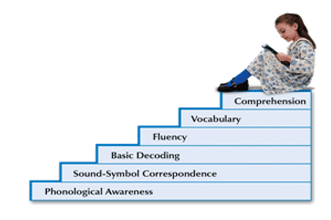

Teachers believe in Lexia
“After 1 year of using LEXIA, I'm convinced that Early Reading, Primary Reading and Strategies for Older Students helped us achieve AYP.”
Marice Diakite
Principal

Students Love it!
My students are always eager to go to Lexia. They are highly motivated and engaged by the program. All children are successful because of the independent nature of the Lexia program.”
Donna M. Felzani, Teacher
Lexia Early Reading Ages 4-6
Introduces phonological principles and the alphabet, helping students master critical early literacy skills
Level 1
- Develops phonemic and phonological awareness. Activities reinforce the precursors to reading; rhyming, word segmentations, and sound blending. The activities in this level do not require alphabetic knowledge.
Level 2
- Introduces alphabet skills. There are five activities; three activities introduce consonants, one activity focuses on short vowels and one activity introduces letter combinations. Students are asked to listen for beginning and ending sounds, including digraphs.
Primary Reading Ages 5-8
Ensures mastery of basic phonological skills and introduces more advanced phonics principles
Level 1
- Transition to decoding. phonemic awareness, sound-symbol correspondence, basic decoding.
Level 2
- Short Vowel Words>; including CVC, blends, and digraphs.
Level 3
- Silent-e: long-vowel (silent-e) words, sound segmenting, contextual information.
Level 4
- Vowel Combinations, Vowel-r: Vowel combinations, vowel-r words, word-attack strategies and conceptual reasoning.
Level 5
- Review: Words in context (sentences and paragraphs)
Strategies for Older Students Ages 9-Adult
Sophisticated, age appropriate user interface engages older students with extensive practice in a wide range of skills, from basic phonological awareness to advanced word attack and vocabulary
Level 1
- Develops automatic recognition of short vowel, one-syllable words. Phonological awareness of sound segments in initial, medial and final positions, including digraphs.
Level 2
- Short vowel words with blends and digraphs and long vowel words. Develop word-attack strategies, sound segmentation, short and long vowel sounds, practice in context.
Level 3
- Decoding two-syllable words. Advanced word-attack strategies and reinforce phonological awareness.
Level 4
- Word-attack strategies for multi-syllable words. Open, closed and consonant-le syllables. Single word, sentences and paragraphs in contextual material.
Level 5
- Structural analysis as a means of word-attack. Anglo-Saxon, Greek and Latin Word roots as well as special accent

Lexia Quick Reading Test ®
The LEXIA Quick Reading Test® offers a quick placement for student for student into the appropriate Lexia program and level. Within five-to-eight minutes, teachers gain an indispensable snapshot of a student’s reading skills, strengths, and gaps. This test determines a student’s ability to use word-attack strategies and evaluates automaticity with basic sight words. A huge time saver, it automatically tracks responses, interprets them, and generates reports that summarize a student’s performance and identifies where practice or instruction is needed. Reports may reflect one student’s progress or that of the whole class.
- Quick decoding screen that evaluates word identification, word-attack skills and automaticity
- Administered one-on-one in 5 to 8 minutes

Lexia Comprehensive Reading TestTM
- Computer-based reading assessment evaluates full range of reading abilities including:
- Kindergarten Readiness
- Phonics and Decoding Skills
- Sight Words
- Burns and Roe Reading Informal
- Extensive reporting features provide vital information

HB두뇌학습클리닉 교육 안내
뇌과학 영어 전문가 과정인 Lexia 전문가 과정은 지난 십여년 동안 수 많은 성공적인 사례와 연구 보고서들이 뒷받침된 영어 학습 방법으로 미국의 Lexia System사로부터 2007년 독점 라이센스 취득하여, 2008년 부터 현재까지 Lexia 전문가를 100여명 이상을 배출하였습니다.
위드브레인연구소는 체계화된 전문가 교육 과정을 통하여 관련 논문 연구와 접근 방법, 프로토콜의 선택 등 보다 선진화된 내용을 제공하고 있으며, 보다 나은 교육 과정을 통하여 국민 건강 증진에 더욱 이바지 하고, 새로운 도전에 대한 국내 전문가 선생님들의 성공을 확신합니다.
| PROGRAM |
교육월일 |
교육비 |
교육자격 |
교 재 |
두뇌평가
BRAIN
ASSESSMENT
|
INDP
신경학적지배인자조합평가
|
별도
문의
|
별도
문의
|
HBI
certification
|
교재 |
BLCA
학습과관련된두뇌기능평가
|
교재 |
두뇌훈련
전문가
Brain
INSTRUCTOR
|
LiFT/TLP
청지각 훈련 |
TOMATIS
certification
|
교재, 매뉴얼,
설문지, 챠트 |
IM
감각통합훈련
|
INTERACTIVE
METRONOME certification |
교재, 매뉴얼,
챠트
|
VISION
시지각 훈련 |
HBI
certification
|
교재, 매뉴얼,
HTS
|
IRLEN SCREENER
시지각
|
IRLEN Ins. certification |
교재, 설문지,
검사kit
|
IRLEN DIAGNOSTICIAN
screener 자격자 한해 교육
|
IRLEN Ins. certification |
교재, 실습,
kit lease 등 |
영어학습
ENGLISH
CLINIC
|
LEXIA |
HBI
certification
|
교재, 매뉴얼,
단어장
|
** 위드브레인연구소에서 실시하고 있는 학습 관련 전문가 훈련 프로그램들은 최소 15년 이상 임상 연구와 임상 프로토콜이 완성되어 그 효과가 충분히 입증되고 훈련의 효과가 예상되는 프로그램들로만 구성되어 있습니다.


